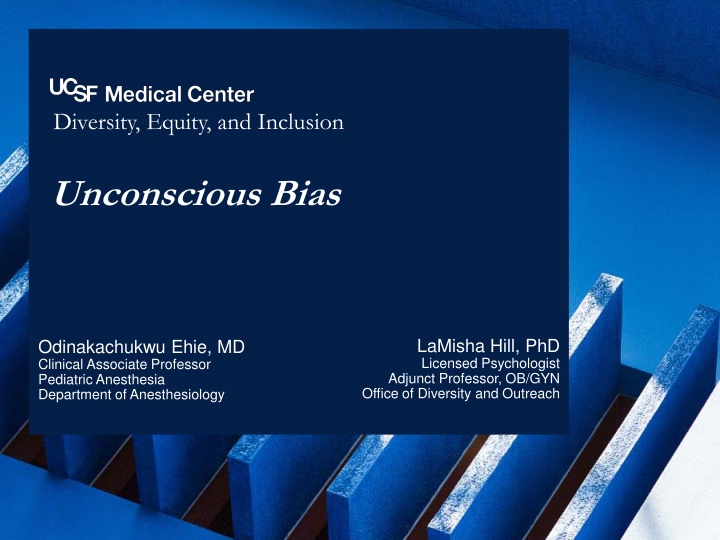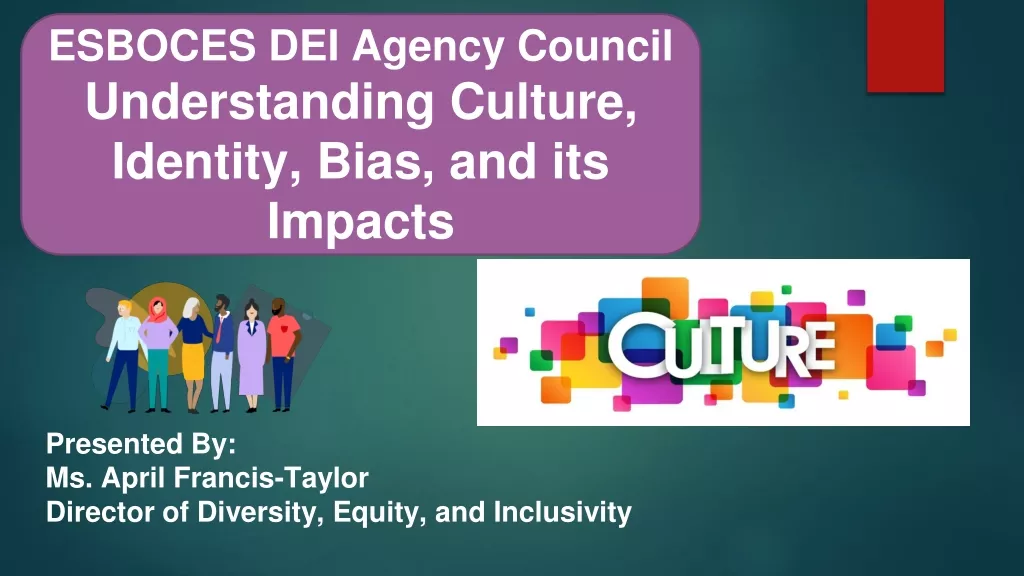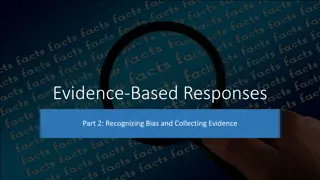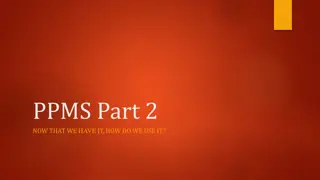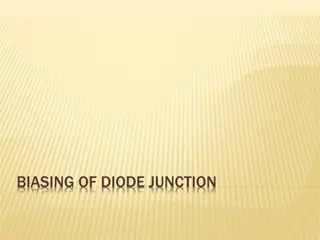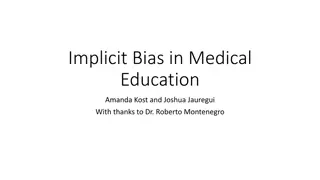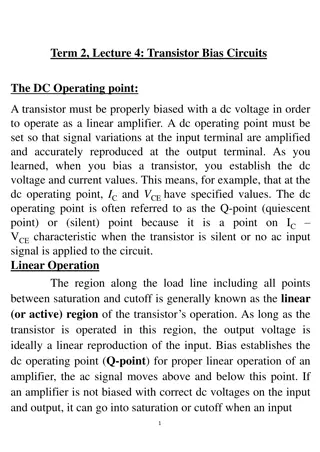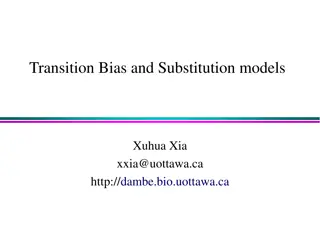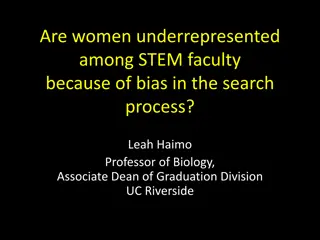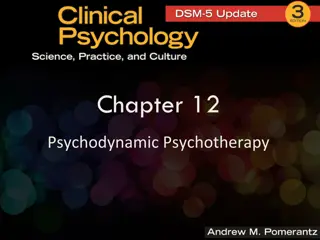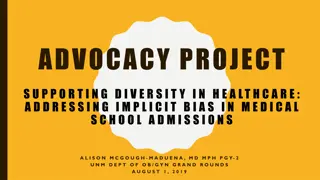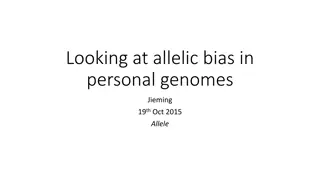Unconscious Bias
Delve into the realm of diversity, equity, and inclusion through an interactive workshop focused on understanding unconscious bias, reducing bias in a safe space, intentional application in clinical settings, and successful interactions with diverse colleagues and patients. Engage in thought-provoking exercises and discussions to enhance awareness and promote inclusivity.
Download Presentation

Please find below an Image/Link to download the presentation.
The content on the website is provided AS IS for your information and personal use only. It may not be sold, licensed, or shared on other websites without obtaining consent from the author.If you encounter any issues during the download, it is possible that the publisher has removed the file from their server.
You are allowed to download the files provided on this website for personal or commercial use, subject to the condition that they are used lawfully. All files are the property of their respective owners.
The content on the website is provided AS IS for your information and personal use only. It may not be sold, licensed, or shared on other websites without obtaining consent from the author.
E N D
Presentation Transcript
Diversity, Equity, and Inclusion Unconscious Bias LaMisha Hill, PhD Licensed Psychologist Adjunct Professor, OB/GYN Office of Diversity and Outreach Odinakachukwu Ehie, MD Clinical Associate Professor Pediatric Anesthesia Department of Anesthesiology
Creative Commons License Attribution-NonCommercial-Share Alike 3.0 Unported You are free: to Share to copy, distribute and transmit the work to Remix to adapt the work Under the following conditions: Attribution. You must give the original authors credit (but not in any way that suggests that they endorse you or your use of the work). Noncommercial. You may not use this work for commercial purposes. Share Alike. If you alter, transform, or build upon this work, you may distribute the resulting work only under a license identical to this one. See http://creativecommons.org/licenses/by-nc-sa/3.0/ for full license.
Objectives Explain two key differences between bias and unconscious bias by providing at least one example of each. Assess one s own unconscious biases in relation to the workshop exercises in a small group discussion. Explain two reasons for reducing bias in a safe and nonthreatening space. Identify three ways to apply concepts around unconscious bias to be intentional in the clinical environment. Model three ways to successfully interact with socially dissimilar colleagues and patients. 2
Panic Zone Stretch Zone Comfort Zone 3
House Rules for the Interactive Session Please have your videos on throughout the session Assume positive intent Listen actively Participate fully and brave leaving your comfort zone, if possible Step Up, Step Back Share your story using I statements Confidentiality Other suggestions? 4
Introduction in Small group setting Name one thing you are hoping to get from this workshop Name Pronoun Your Department 5
Whom To Leave Behind Exercise Whom to Leave Behind Instructions: The twelve persons listed below have been selected as passengers on a spaceship for a flight to another planet because tomorrow the planet Earth is doomed for destruction. Due to changes in space limitations, it has now been determined that only eight persons may go. Your task is to select the four passengers who will not make the trip. On your own, take a few minutes and rank the order of the passengers from one to twelve based on those who you feel are most deserving to make the trip with one being most deserving twelve being least deserving. Next, the entire group will come together and share the four passengers that they decided will be left behind. Original passenger list: _____a militant African-American medical student _____an accountant with a substance abuse problem _____a 33-year-old female Native-American manager who does not speak English _____the accountant s pregnant wife _____a famous novelist with a physical disability _____a gay man, professional athlete _____a Hispanic clergyman who is against homosexuality _____a female movie star who was recently the victim of a sexual assault _____a racist armed police officer who has been accused of using excessive force _____a 21-year-old female Muslim international student _____60-year-old Jewish university administrator _____an Asian, orphaned 12-year-old boy Adapted from University of Houston s Diversity Activities Resource Guide. Accessed February 10, 2021. https://www.uh.edu/cdi/diversity_education/resources/_files/_activities/diversity-activities-resource-guide.pdf 6
Harvard Implicit Association Test o https://implicit.harvard.edu/implicit/takeatest.html 7
Harvard Implicit Association Test o https://implicit.harvard.edu/implicit/takeatest.html 10
Harvard Implicit Association Test o What surprised you about your results? o What feelings did you notice bubbling up? o How does unconscious bias manifest in your educational training? In your workplace? o How does structural racism manifest in your educational training? In your workplace? 11
Racial Preferences of White/Black/Biracial Adults o Pew Research Center used IAT to measure racial bias o Single-race whites, blacks, Asians o Biracial (white and black) or (white and Asian) o Studied whether biracial adults unconsciously view one of their racial backgrounds more favorably
Racial Preferences of White/Black/Biracial Adults
Bias versus Unconscious Bias o Bias o A strong inclination of the mind or a preconceived opinion about someone or something o Unconscious Bias o the attitudes or stereotypes that affect our understanding, actions, and decisions in an unconscious manner. These biases, which encompass both favorable and unfavorable assessments, are activated involuntarily and without an individual s awareness or intentional control. (Blair, 2002; Rudman, 2004; Staats, 2014) 14
Implicit Bias: Unconscious Bias o Examples o Resumes with ethnic sounding names pushed down in the selection for interviews (Bertrand & Mullainathan, 2004) o Science faculty rated male applicants for a laboratory manager position as significantly more competent and hirable than female applicants. Faculty also selected a higher starting salary and offered more career mentoring to the male applicant (Moss-Racusin et al, 2012). 15
How diverse is your universe? trainingjournal.com 16
Go to PollEV.com link https://pollev.com/odinakachukw765 17
Stereotype o Stereotype o The conceptual attributes linked to a particular group as defined by a culture o Involves the encoding and storage of stereotype concepts, their selection and activation into working memory and their application in judgments and behaviors o Stereotype suppression o Active suppression of stereotypical thoughts about an individual of a different background that usually results in decreased social encounters 23
Study to test whether physicians show implicit race bias and whether this bias predicted clinical decisions regarding thrombolysis recommendations with ACS patients. Main outcome measures: IAT scores measuring physicians implicit race preference Perception of cooperativeness Physicians attribution of symptoms to coronary artery disease for vignette patients with randomly assigned race Physicians decision about thrombolysis Assessment of physicians explicit racial biases by questionnaire
Does our bias predict behaviors? Physicians reported no explicit racial preference IAT demonstrated implicit preference favoring white Americans (p<0.001) and implicit stereotypes of black = less cooperative Correlation of pro-white implicit bias with likelihood of treating white and not black patients with thrombolysis Green et al., 2007
Wrap Up In one word, one thing you are walking away from this workshop? Insert PollEV link for wordcloud
Thank You References @OdinakachukwuE5 27
